Legend of Heroes Trails in the Sky Review
The Legend of Heroes: Trails in the Sky review
The Legend of Heroes franchise is Nihon Falcon's magnum opus, first released in Nippon way back in 1992 and, at the time of writing, is on its third story arc within the third sub-series of a franchise, which, at the time of writing, has 14 games in its mainline also as a number of spin-offs.
This article was originally published at https://www.britgamer.co.uk/article/legend-heroes-trails-heaven-review
Trails in the Heaven (which later became known every bit Trails in the Heaven FC, or "First Chapter"), is the starting point for the Trails sub-series, and it goes to testify that good writing, dialogue and plot can keep a game from seeming dated, even decades subsequently.
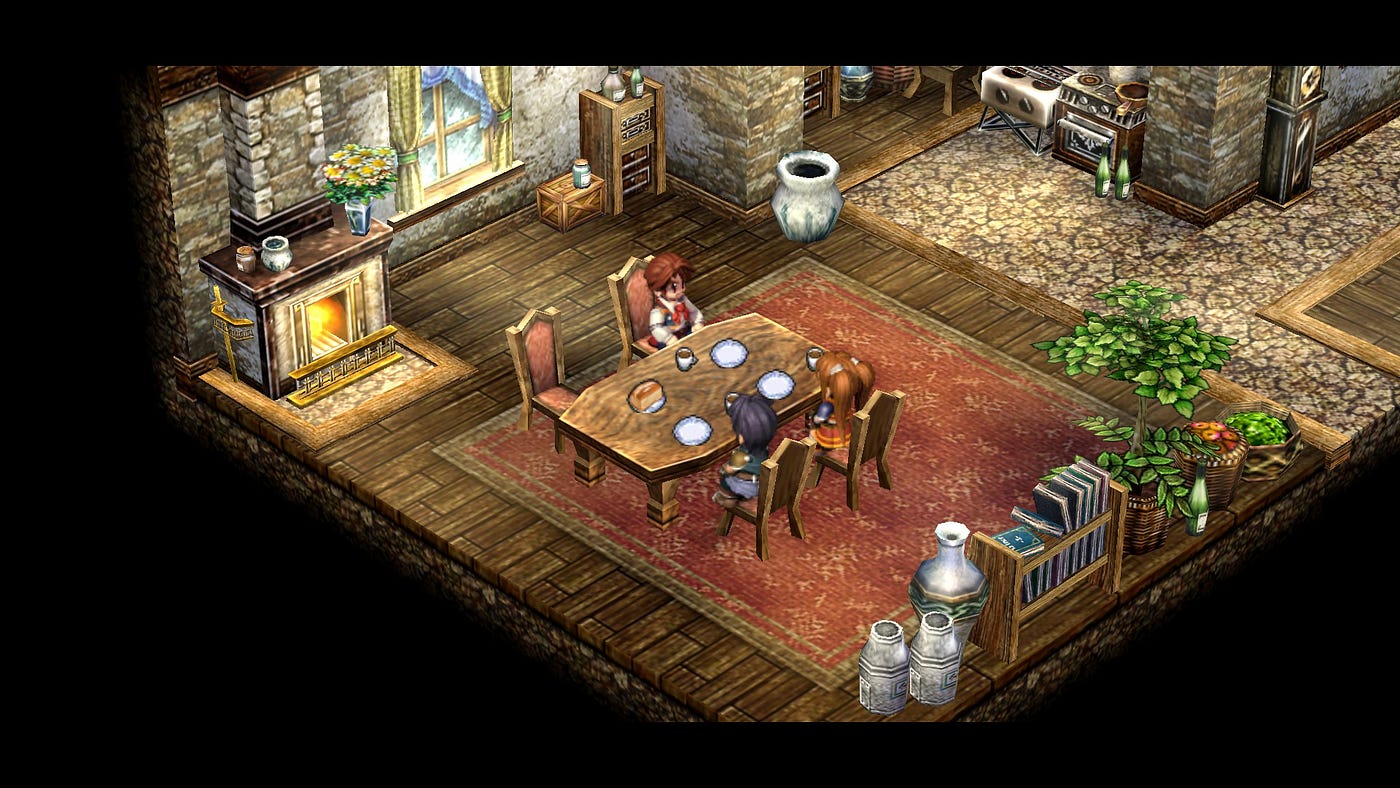
Commencement things outset
Trails in the Heaven is very much a classic plough-based JRPG in almost the strictest sense. As a Westerner, and particularly one whose but experience of JRPGs in my youth was Final Fantasy 7, the feel was a bit of a civilisation shock. We're just non used to these kinds of games, merely rather than allow that to be a barrier, I was able to care for it as a learning experience.
It'southward a 3D environment, presented in an isometric, rotatable camera perspective, with sprites for characters, but the art is charming. It's cutesy, but still relatable, and gear up in a steampunk version of a guild that went industrial almost overnight, with a lot of relics of the pre-industrial days even so present.
Combat is played out on a grid in a plough-based fashion, with a "magic" system, although the game has its own lore regarding this, and in that location's the usual healing, elemental, and area-of-effect "spells" against a broad multifariousness of enemy types. There are no random battles, although monsters exercise appear on the globe map, and so information technology's the player's choice whether to engage near of the time, although their placement makes information technology a necessity at other times.
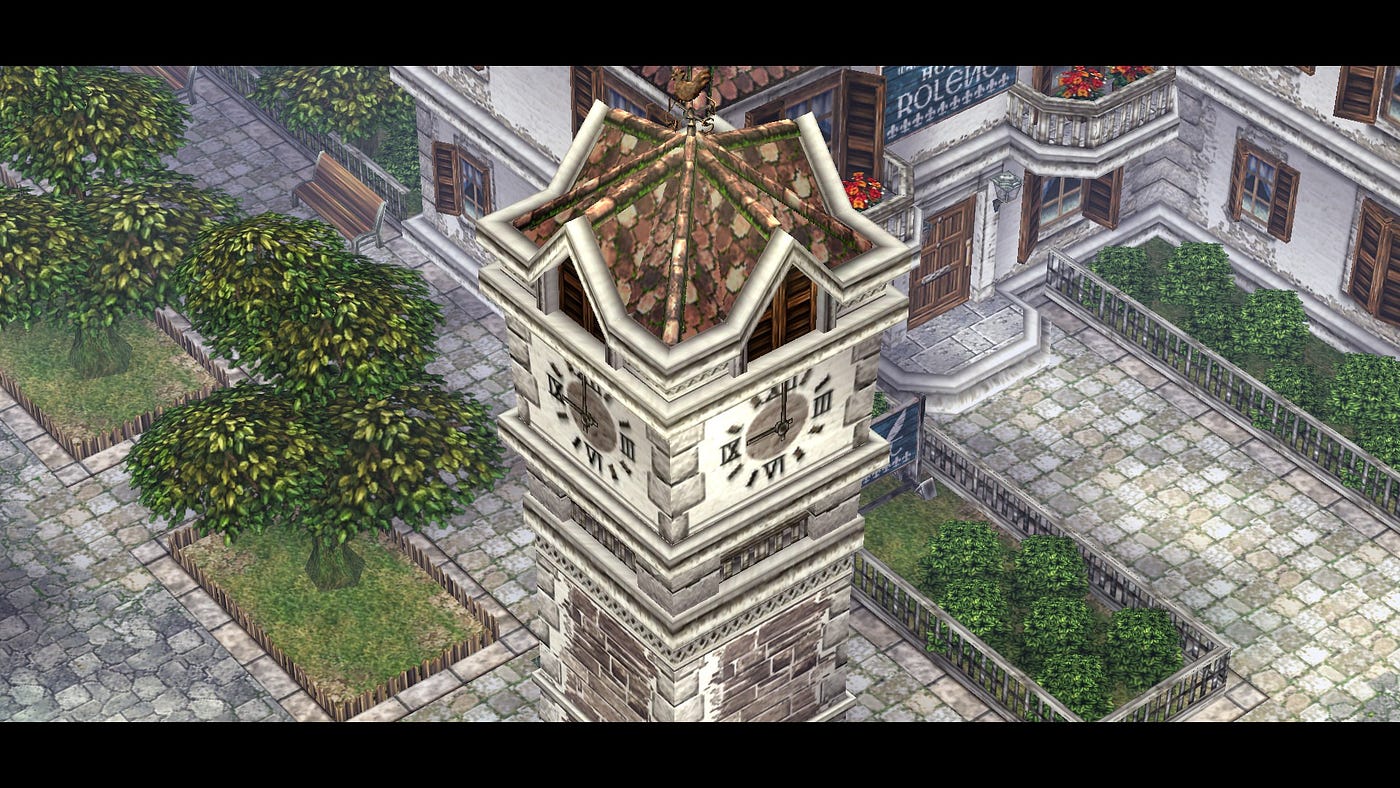
The Premise
You play as 2 protagonists, Estelle and Joshua Bright, children of famed state of war hero Cassius Vivid. The game opens with your introduction to these characters, every bit Cassius saves Joshua every bit a young boy, during the war, and brings him domicile. As the boy has no living relatives that he knows about, Cassius decides to adopt him, and he becomes brother to Estelle, whose mother, Cassius'southward wife, was already out of their lives.
This arc of Trails is set up in the nation of Liberl, which has an organisation called the Bracers. They're a flake similar an unofficial police forcefulness crossed with the boy scouts. People will report their problems to the Bracers, which might exist anything from a kidnapping to "I've lost my ring", and with a Bracer "guild" in each major city, its members are tasked with solving these issues.
The game introduces us to Estelle and Joshua at age 16, which tends to exist a trope within JRPGs: teens saving the globe, which itself is a reflection upon Japanese values and order. They are setting out to take their first steps in the Bracers, at the same time every bit their quondam man is taking a trip abroad for some time, and that's where the actor is thrown into the activeness.
Equally a premise, it's pretty original. Non the teens-save-the-world function, although this isn't presented as a series of globe-shaking events by any means, only the adoption of Joshua into the family, at the aforementioned age as Estelle, and their relative youth, gives the player a way to meet both the female and male perspectives on events and discover much of this world for the starting time time along with the protagonists.
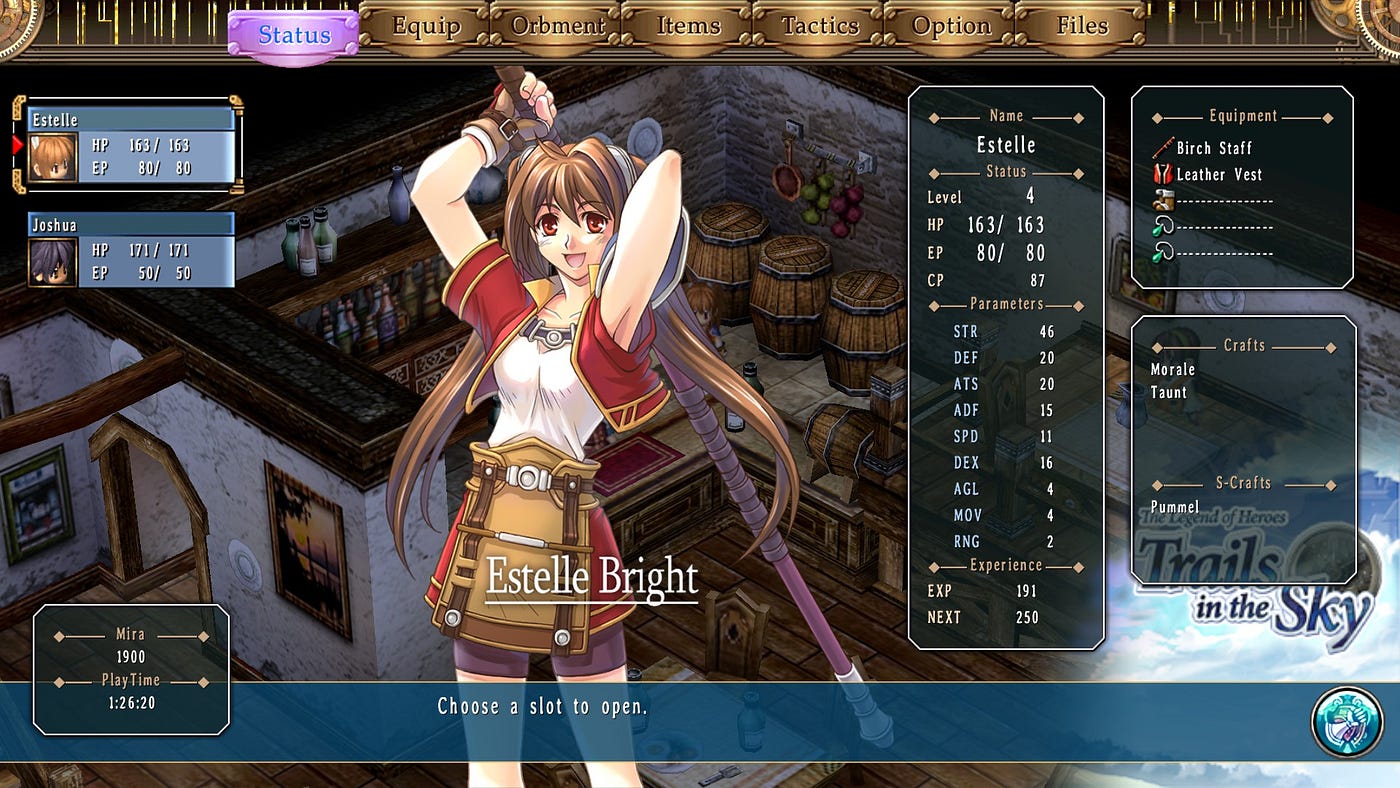
Ii Protagonists, 2 Perspectives
Much like other interesting character pairs such as Mulder and Scully, Estelle and Joshua show two very different personalities for much of the game, giving the player a broader perspective on various events.
Estelle is the hot-headed, human action-get-go-recall-after type, who isn't particularly studious or… er… "brilliant" (despite her name), whereas Joshua is the lonesome silent and thoughtful type. Dialogue-based confrontations are more often than not led by Estelle, while sleuthing and other enquiry-based conversations are Joshua's domain.
In spite of their obvious differences, both of the chief characters are well fleshed out and a strong bail is portrayed between them. The narrative definitely plays up the sibling rivalry, sometimes to comedic effect, and sometimes perchance even goes over the top with information technology, but you lot're left with a definite sense they are on the aforementioned folio when information technology comes to survival instincts and piece of work ethic.
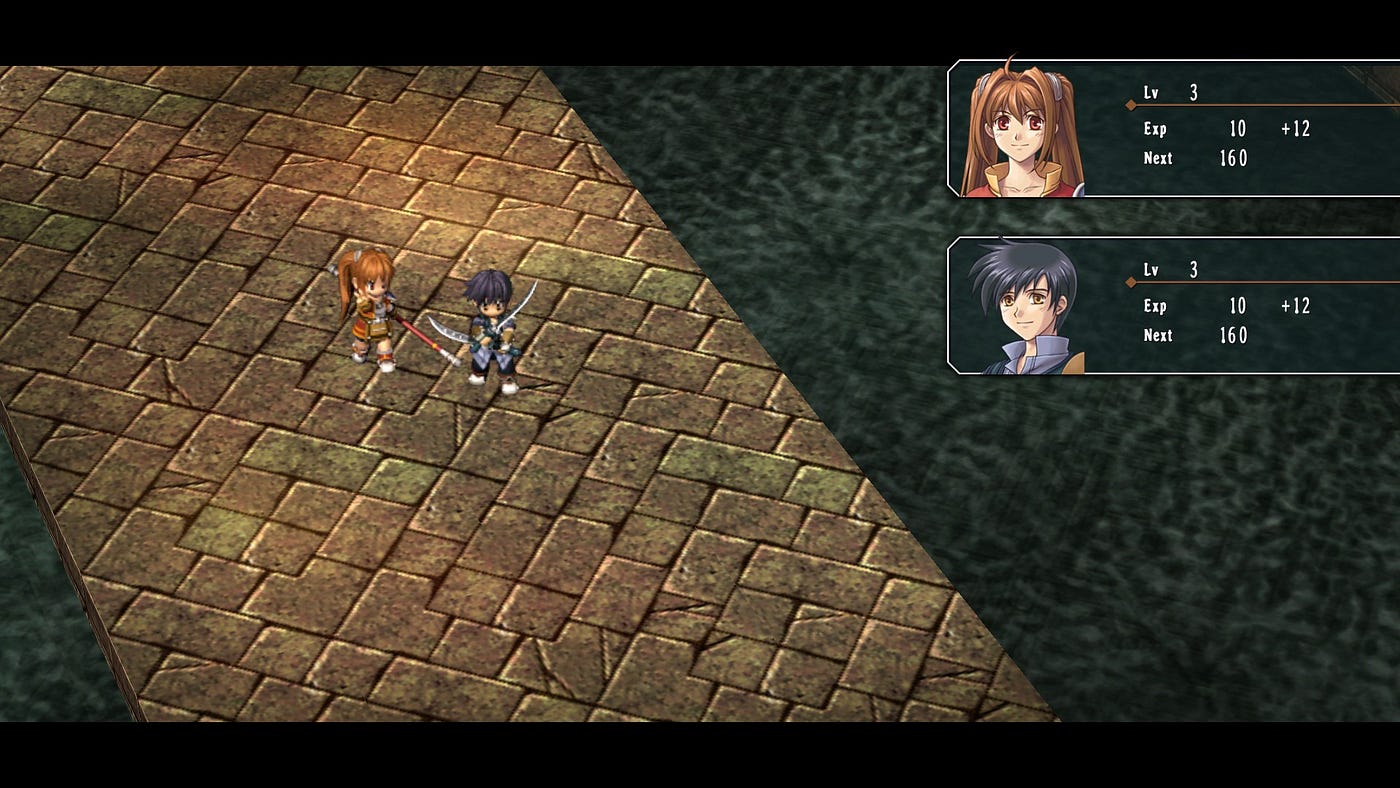
Other playable characters
Did I mention this game is long? It's divide into a number of principal chapters, and in each, the two main protagonists are joined by a number of other playable characters, some of whom return from previous chapters, while others are nowadays only for a one-off.
This is a great way to keep things fresh, and I feel it's a big pay-off. While many role-playing games, JRPGs included, start with a single protagonist or a pocket-size political party, and the political party grows every bit the game progresses, it'southward non mutual to find a game where other characters leave the party, ostensibly for good, when a chapter ends, so information technology's a refreshing change in Trails versus games where your party fills up and stays that style.
The political party is made up of 4 characters at virtually, but in Trails you lot won't be picking from a roster where some political party members must be left backside. It'southward not ever four either. Sometimes it's just Estelle and Joshua.
Although I came beyond a few characters I didn't particularly like, I never constitute one I thought was written badly. My attitude towards them was largely shaped past their grapheme traits, and somewhat by Estelle and Joshua'southward thoughts on them. Even though some characters are only with the party for a short amount of time, they're largely non one-notation, with a decent amount of depth and their own perspective on the world.
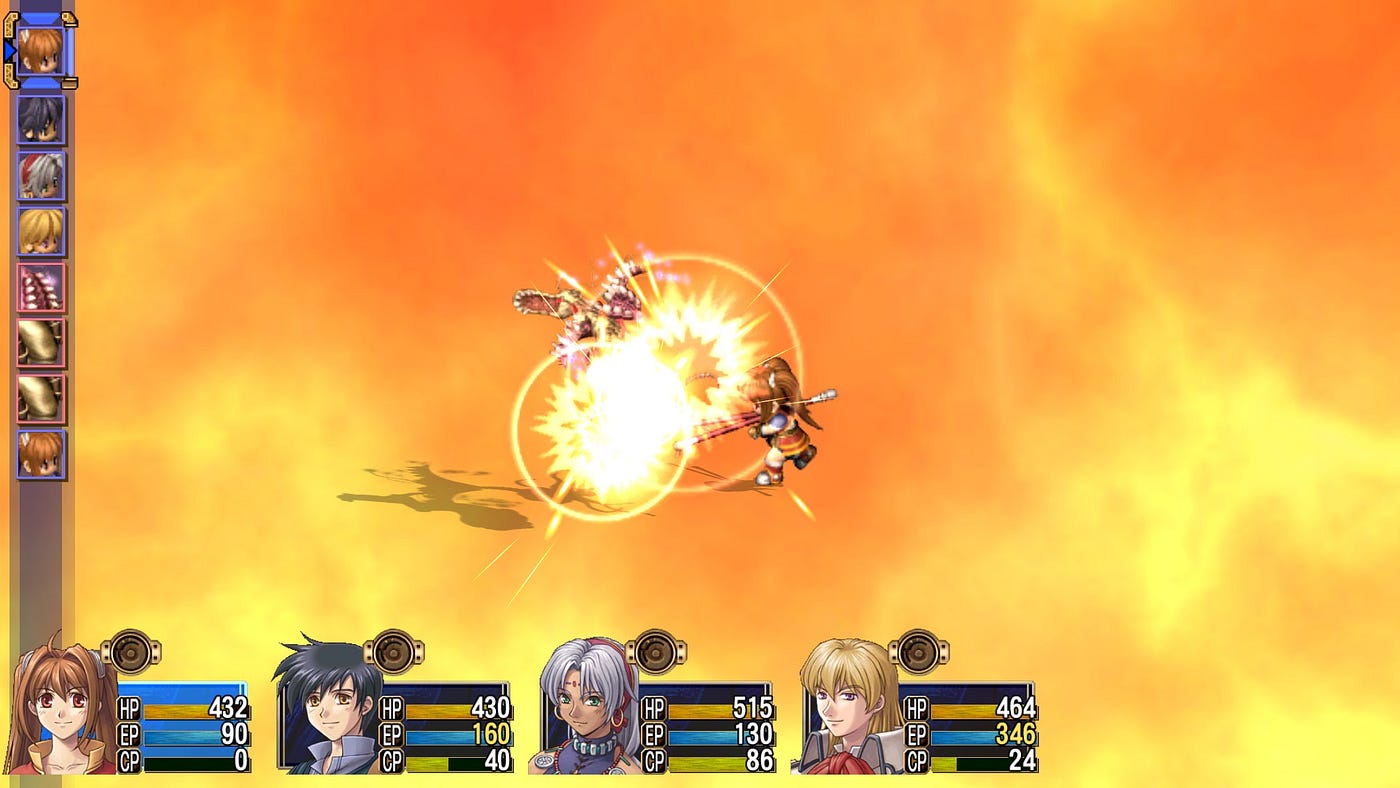
Gainsay and Levelling
Combat encounters can start when running into a monster on the world map, or at certain other times when the game requires a fight to take identify. I peculiarly hate random battles in JRPGs, for a lot of reasons, and so I constitute information technology great that there are none here, only those players looking for a more gainsay-heavy playthrough can still find enough of action simply by running into more monsters on purpose.
Combat is turn-based, and apart from a basic set on, there's two systems: arts and crafts. To a Westerner, this sounds like going home to practice a flake of cantankerous stitch and have a nice cup of tea, simply this terminology is in so many JRPGs that information technology'south probably more to do with the words not having a decent English translation.
Crafts are a range of skills that are (more or less) unique to each character, and more are gained by levelling upward, whereas arts are the "magic spells" in the game, and the list of bachelor arts for each graphic symbol depends on their quartz loadout (more than on quartz later).
There'south as well a particularly satisfying "S-Craft" (like, super craft, I gauge), which is like a limit intermission, or ultimate ability. When this becomes set up to fire off, it tin can be done at any time, interrupting the plough order, which adds a really overnice actress tactical element.
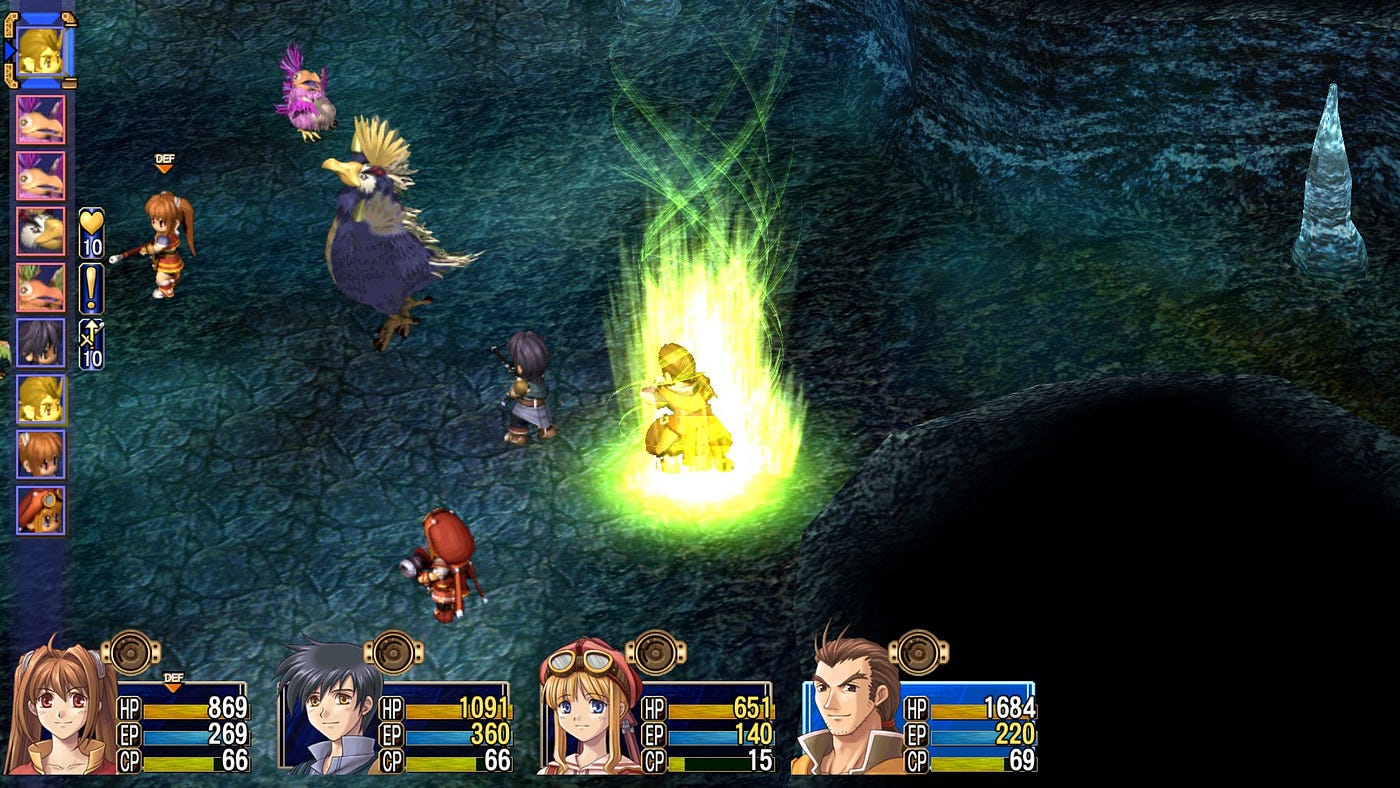
The battles play out on a filigree, where each grapheme is allowed to movement towards an enemy if attacking, or explicitly utilise their turn to move. This adds the strategy of positioning, because some friendly and enemy abilities have an area of effect. Some attacks can besides crusade knockback, so it'due south possible to carefully push enemies closer together, in social club to follow up with an expanse of issue attack straight afterwards.
There's besides abilities that tin can affect the turn lodge, making enemies wait longer for their plough, or making your characters have their turn sooner.
The "magic" system is elemental, so there are fire, h2o, air, and earth spells, as well every bit a few other categories similar fourth dimension and mirage, with various buffs and items that tin can protect against or completely resist certain types of attack.
I found the combat system to be extremely fun even over the class of dozens of hours. The principal "on the map" enemies are generally a pushover, and the challenge is in being able to survive enough of these in a row to make it to the next town, rather than worrying well-nigh dying on the get-go 1 you run across.
Conversely, the boss battles and other various "scripted" combat events are much tougher. Sometimes it's possible to know what yous're going up against, such as 1 "tower" surface area where nearly of the enemies use burn attacks and are weak against h2o, simply other times yous just don't know, so you're forced to strategize there so.
This did price me a few game overs throughout my playthrough when there were new or unexpected types of damage, but the game allows you to instantly start any boxing over from the start, and so it doesn't punish y'all for failing due to coming across something you've never seen before, because you get to try once again without a delay.
In general, early encounters are pretty ho-hum considering your characters don't have many options at the start, so it'due south mostly just pressing the standard assault until the enemy is expressionless, and I would take liked to see more diversity in the early game, but it's definitely worth enduring until the fights go more interesting.
Due to the style experience works, fighting weaker enemies volition yield very few experience points, just it tin even so be worth information technology to collect the items they sometimes drop. This did get a chip frustrating when an entire area is littered with unavoidable single very piece of cake enemies, and I was wishing there was an "machine-resolve" for those situations where the enemies basically can't fifty-fifty injure yous, only these situations were really rare.

Performance
It's rare I can say this but the operation of this game is outstanding on Windows. I played my Steam copy entirely through Steam Link, using a controller, and I had no crashes or performance drops of any kind.
Information technology's an older game, first released in 2004, and released in English on Steam in 2014. The original Windows version in Japan ran on DirectX 8, which is positively aboriginal. There's at present a DirectX 9 selection, thankfully.
Hey, it's not going to win whatsoever graphical awards in 2020, but the graphics stand up up just fine, conveying the necessary information while retaining a agglomeration of charm.
The do good to modern gamers is that everything is fast. The game starts up in seconds, loads a saved game in seconds, transitions between areas in the blink of an eye, and seems to be super stable. The Xbox controller "only works" with no setup required, and there'south enough buttons on the controller to perform any action in the game.
Since latency isn't an consequence with this style of game, I was able to play the entire game through Steam Link over WiFi, with the only small issues beingness a bit of blockiness when the signal was poor, but that'southward not an outcome with the game itself.
I can't stress this enough, especially if yous're like me and you're reluctant to pick upward PS2-era games considering of compatibility issues on modern systems: this worked flawlessly, better fifty-fifty than some new releases.
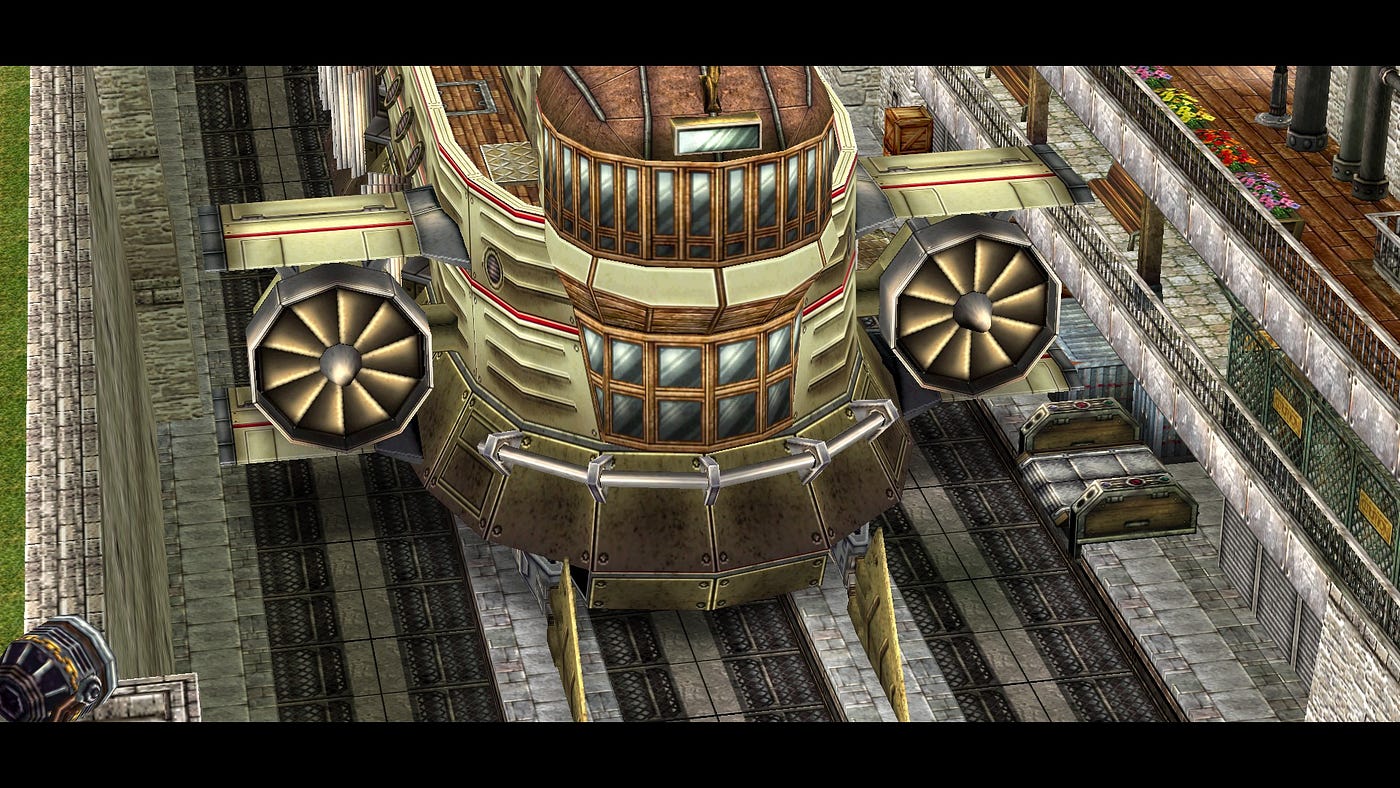
Orbments, Quartz, and Steampunk
Every bit mentioned a bit before in the review, the world of Trails has a steampunk vibe. According to the lore, it'south been about l years since "orbments" were discovered. These are basically a handwave to explain powered devices and machines. Y'all need lights? Use an orbment! Need motors or gears to turn? Orbments! Need special magic effects in com… you lot go the idea.
The interesting part of the world-edifice is the relatively contempo discovery of this technology, as rural areas don't take much of this steampunkiness, and look more than rock-and-wood in their structure, while cities are full of lights and have airship docks for regular public transport.
This also allows the game to play with the thought that society doesn't all the same sympathize this "orbment" stuff in much item, introducing diverse in-universe conspiracy theories and legends about "special" types of orbments and their effects.
From a gameplay perspective, you collect these piddling shards from defeated enemies, in various colours, such equally cherry-red for fire, bluish for water, and then on. If you have enough, you can craft a "quartz", which can be placed in a slot on i of your characters, and grants special arts.
For example, crafting and equipping the "Attack 1" quartz grants the ability to cast a elementary fire spell for that character. Yeah, either the writers got lazy with names for things, or they didn't translate well, because mostly they're just attack 1, attack 2, and and then on, indicating more than powerful and costly alternatives.
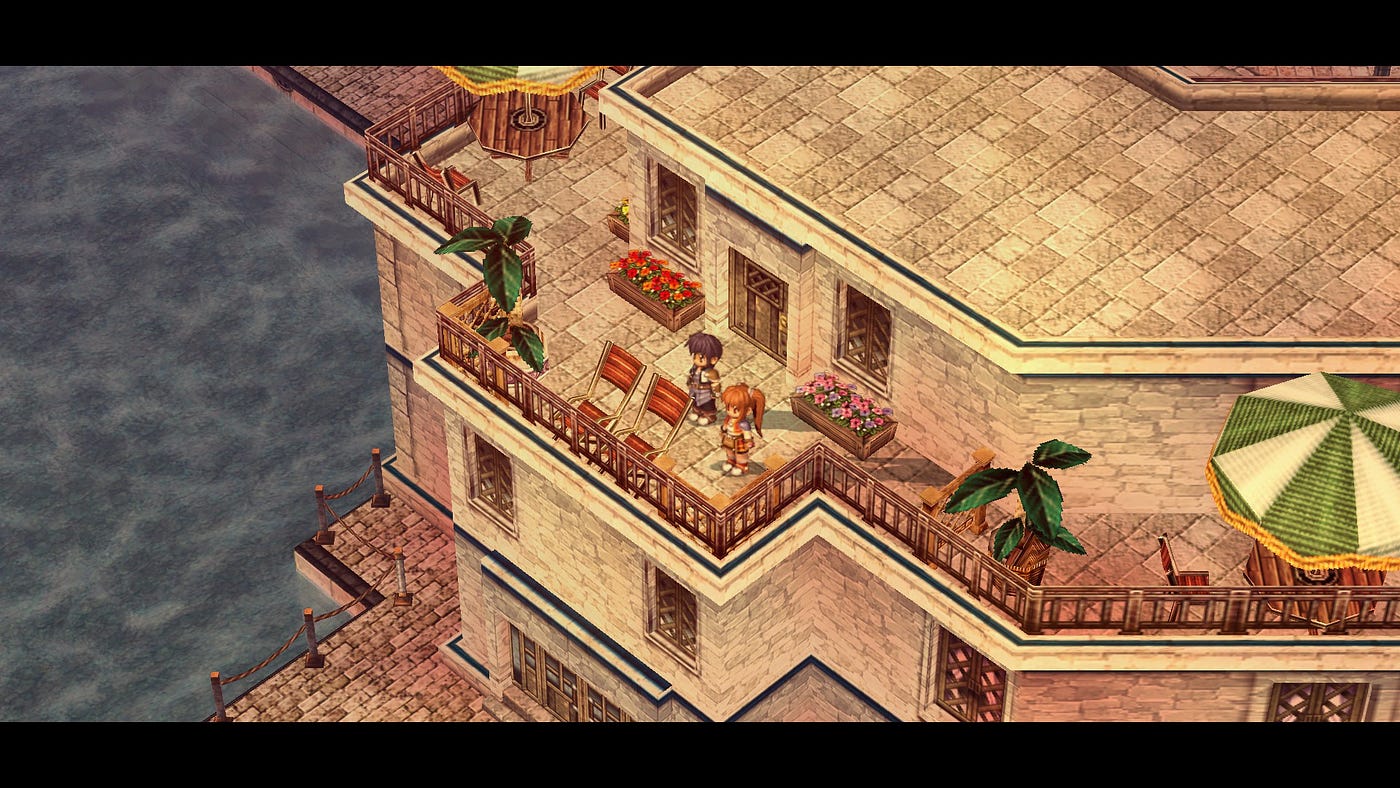
Obscured past jank
The game isn't dandy at explaining the details of these mechanics. I'm certain information technology might well be somewhere in the fine print of the many in-game "transmission" pages, only I certainly didn't find information technology, and merely discovered the true potential of the quartz system about 15 hours into my playthrough.
Initially, I thought that the "spell" was independent "inside" the quartz, so if you lot equip "HP 1" it would give yous the simple healing spell, and "HP 2" would requite you a better one, then on. It became articulate this wasn't the instance, because the game freely lets you customise and equip almost whatever quartz on any character, and I just wasn't getting the results I expected.
In that location's really a more than complicated system in identify that I'd totally missed, just, once I understood this, the customisation became a lot more fun. By equipping a cerise quartz, your character gets what I'one thousand going to call "cherry-red points". A low-level one might requite 1 point, and a loftier-level one possibly five points. It's the number of points in each category that determines what arts (spells) you accept available, and when you realise this (hopefully from the outset, dissimilar me), the strategic options start to shine.
Yous could requite a character access to powerful healing spells early, but just past equipping a large number of blue quartz (quartzes?), and when you have a single more than powerful blue ane, you can free up a few slots for something else, or just go even college with the amount of healing arts yous tin utilize.
Almost of the characters in the game can have pretty much any quartz setup, which is such a great characteristic. The "girl grapheme" doesn't always have to be healer. In fact, you might desire to turn Estelle into a combat brute in your playthrough and accept Joshua doing the healing. Or just swap their roles, or have a bit of healing for each.

Story and Progression
The game splits the story into a number of discrete chapters. Since at that place'southward a Bracer guild in every major city on the game'southward world map, information technology's up to Estelle and Joshua to do some tasks at each one, and gain a recommendation. Each affiliate involves gaining the recommendation before progressing to the next urban center to progress the story.
Simple, on the face of it. Information technology'south the fashion the story develops that makes this such a compelling game. Every time you arrive somewhere new, there's something going on. But non in a Bethesdy-Skyrim shit way. You know, become to the mage society, cast a spell, y'all're suddenly granted access to it, then get kill a few things or collect some random crap, and of a sudden you're the leader of the gild.
Instead, Trails leads with mysteries throughout. In one of these, a package arrives addressed to Estelle and Joshua'south father, but he's away on business concern or something. They argue whether to open it (spoiler, they're xvi, so they have no restraint), and they don't actually understand what'south within.
The game doesn't immediately focus on this part of the story, and yous move on, only to have this mysterious package come back upward in the story later at diverse points when yous have more information. This kind of storytelling is far more natural and makes you lot want to find out what's going to happen next. When you consider at that place's a large number of interwoven narrative threads like this, the compelling gameplay starts to sally.

Cutesy
In that location'southward a few moments where the game goes full on "awww", especially when 1 character is introduced, who turns out to exist younger than Estelle and Joshua, merely highly intelligent and a very skilled mechanical engineer… and female person.
Bucking the trend of a typically male-dominated career is quite typical in Trails and information technology's honestly great to encounter, but it'south the way that the protagonists are written here that is specially well crafted. Estelle and Joshua are able to convey both their respect for this character'southward unusual skill, and their sensation of her vulnerability and inexperience, and punch in merely the right responses to aid her go where she needs to go.
This isn't really ever spoon-fed to the actor, and nor should it be: it's only how I imagine this situation might play out in real life. The two protagonists themselves are quite young and lacking life experience, and take to deal with someone even younger, only in a way that isn't patronising, and what results is a beautiful slice of storytelling.
Pacing and Side Quests
Overall, cheers to the chapter-based gameplay, I found the pacing was excellent. The story kept moving at a reasonable footstep, despite there being so many things going on, simply in that location are always a number of side quests to take on in the nearest Bracer order.
I think it's excellent that all of these are entirely optional, with enticing rewards. They vary in quality, with some beingness a simple fetch quest, especially early, and some being almost similar a fully fleshed out story of their own. I did try to have on all of these in my playthrough, with varying degrees of success.
I mentioned earlier that the game really doesn't concord your hand. If you wait as well long, side quests will expire and you'll automatically fail. At that place'southward no penalisation for this; it just means you don't become the reward, but there'southward no notification: you just plough upward one twenty-four hours and the quest is failed.
The quests are oftentimes but attributed to a particular character's name in a city somewhere. Given the cities are fairly large, it's actually only possible to find some of these characters if you lot accept explored and talked to them before. At that place'south absolutely no quest markers on annihilation in this game. Sometimes, you lot'll get the proper name of a bar or hotel in which y'all need to meet, and other times non.
For example, when a dock worker left a message at the Bracer club to say he had lost his ring, he was fairly easy to find. At that place's only so many characters at the docks and it's straightforward to talk to him, just when you exercise, you discover he has no thought where he concluding saw it except he knows he dropped it somewhere while in the docks.
This quest was merely carefully exploring all of the docks area to find the missing item, almost like a pixel hunt. Information technology's i of the less compelling side quests in my stance, but it's a skilful demonstration of what yous're upward against.
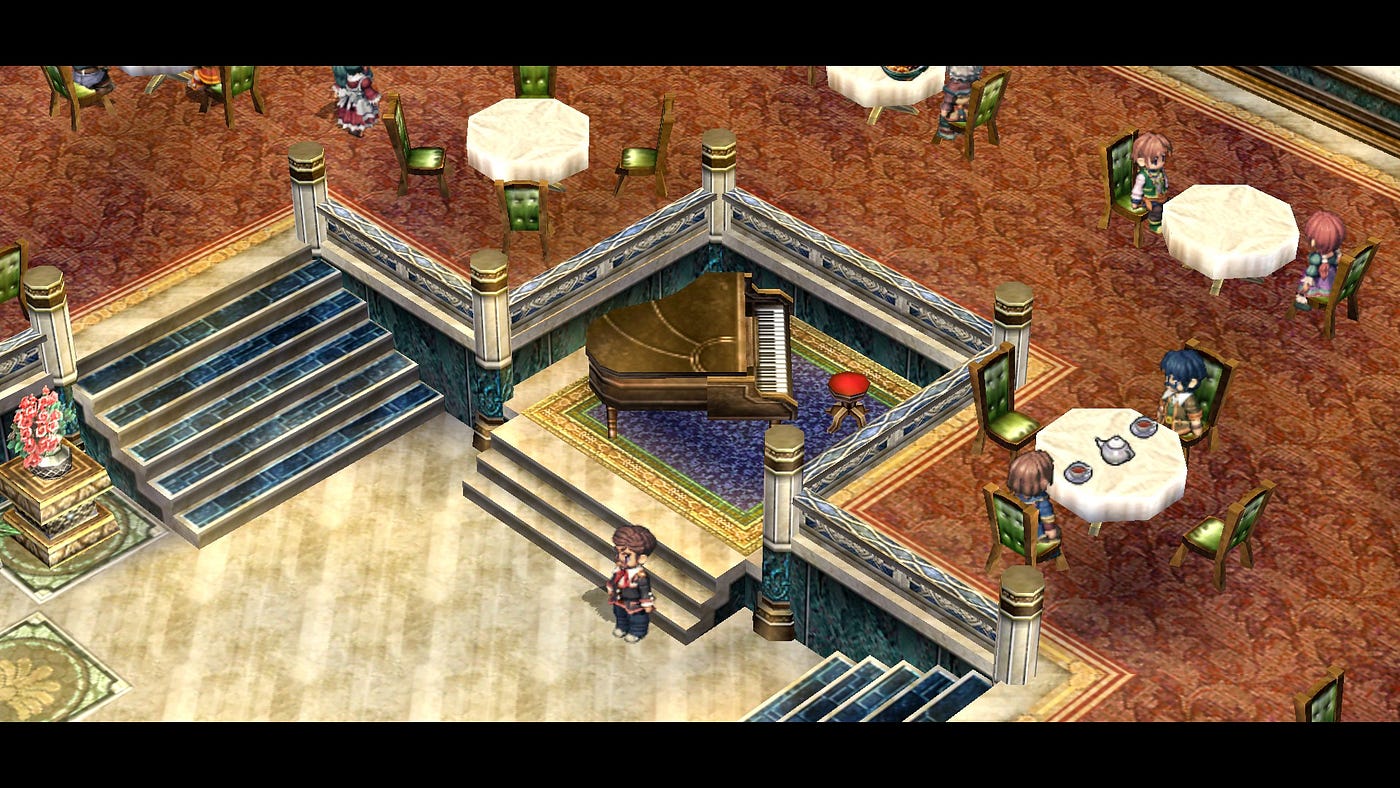
Attention to Detail
Yous know the score when you lot're playing certain games: you come across a doorway, there's no prompt, yous tin can't enter. This happens once again and again until you find the correct door, and you think, "a-HA! At that place must be something plot-related in here, or the designers wouldn't have fleshed out this area!"
In Trails in the Sky, every building interior and every room is accessible and fleshed out, whether there'due south a point in going in there or not. Alarmingly, but not uncommon in the JRPG genre, you can only burst into random people'south houses, and when you talk to them, they'll greet you with whatsoever they were doing yesterday, or joke about their married man, instead of instantly calling the cops on you. Well I guess you lot kind of are the cops in a manner.
I then very rarely run into this level of detail in video games that I felt unusually satisfied whenever I encountered a new area. Sure, each "metropolis" in the game is a pocket-size collection of buildings, truncated to save time, and nothing like the size of a existent city, but when I got in that location, I knew I could pretty much go anywhere and talk to anyone, instead of running into random pointless doorways that lead nowhere.
Each urban center and village has its own unique flavour, from littoral towns with stunning (for the PS2-era) views, to the industrial feel of Zeiss. A huge amount of world-edifice has gone into this place. You can tell how many people alive in a place by carefully looking at how many beds there are. There'south always some kind of kitchen area for preparing nutrient, and very few layouts and decorative themes are repeated.
At that place's no toilets in this game though. That's but… weird. People in Trails take no assholes, obviously.
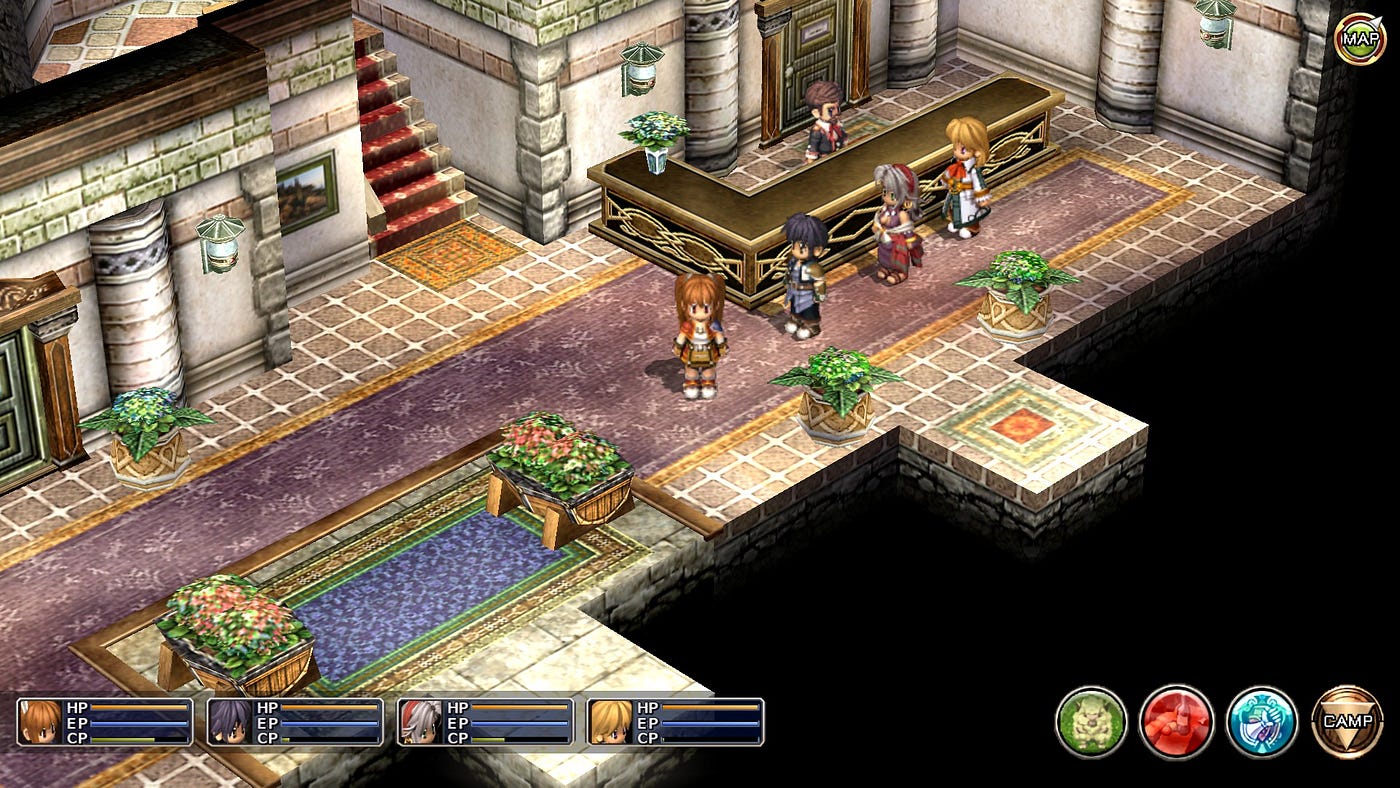
I Hope You Similar Reading
While modern games are mostly 100% voice-acted, this just wasn't common dorsum in 2004. This is a text-heavy game with no voice acting beyond a few combat sound effects. Good thing, then, the writing stands up to this challenge.
I remember roughly half my playtime was spent in dialogue. In that location'southward a lot of it, and very little is interactive. In that location's a scant few choices to brand, just this is not the type of game where you're able to make a weighty pick to affect the outcome of the story. I found information technology much more rewarding when I sat back and "played" information technology like a visual novel, sometimes for upwards to an hour of dialogue at a time with no actor interaction other than pressing a button to advance the text boxes.
The localisation team take done an incredible job with Trails in the Heaven. I found two typos in my unabridged playthrough, very pocket-size, and although I don't speak Japanese, it's obvious through the use of English language colloquialisms that the team backside the English version knew what they were doing.
I think information technology's noteworthy that with this corporeality of dialogue, if the storytelling wasn't quality, I would have lost interest. The dialogue is natural, furthers the graphic symbol'southward own personality, and is genuinely heartwarming in places.
Estelle and Joshua take to human action in a play in one particular role of the game. This isn't a new concept; we've seen it before in other games, and there aren't even whatever choices for the player here, but it'south the interaction between the characters, portrayed in the writing, that makes this section shine.
Estelle gets to stay in a kind of dorm shared past two other girls, while Joshua has to stay elsewhere. Given that Joshua's adoption ways these two were siblings in the story, information technology means Estelle would have shared a house with Joshua her entire life, and up to this bespeak in the story, they've been travelling together and sharing a room.
The writers know how to play this up, and Estelle is excited she gets to "stay over" with two friends, both girls, and then she can experience a bit of fourth dimension without her blood brother. It'southward played really well, and it drew me into this earth very assuredly.
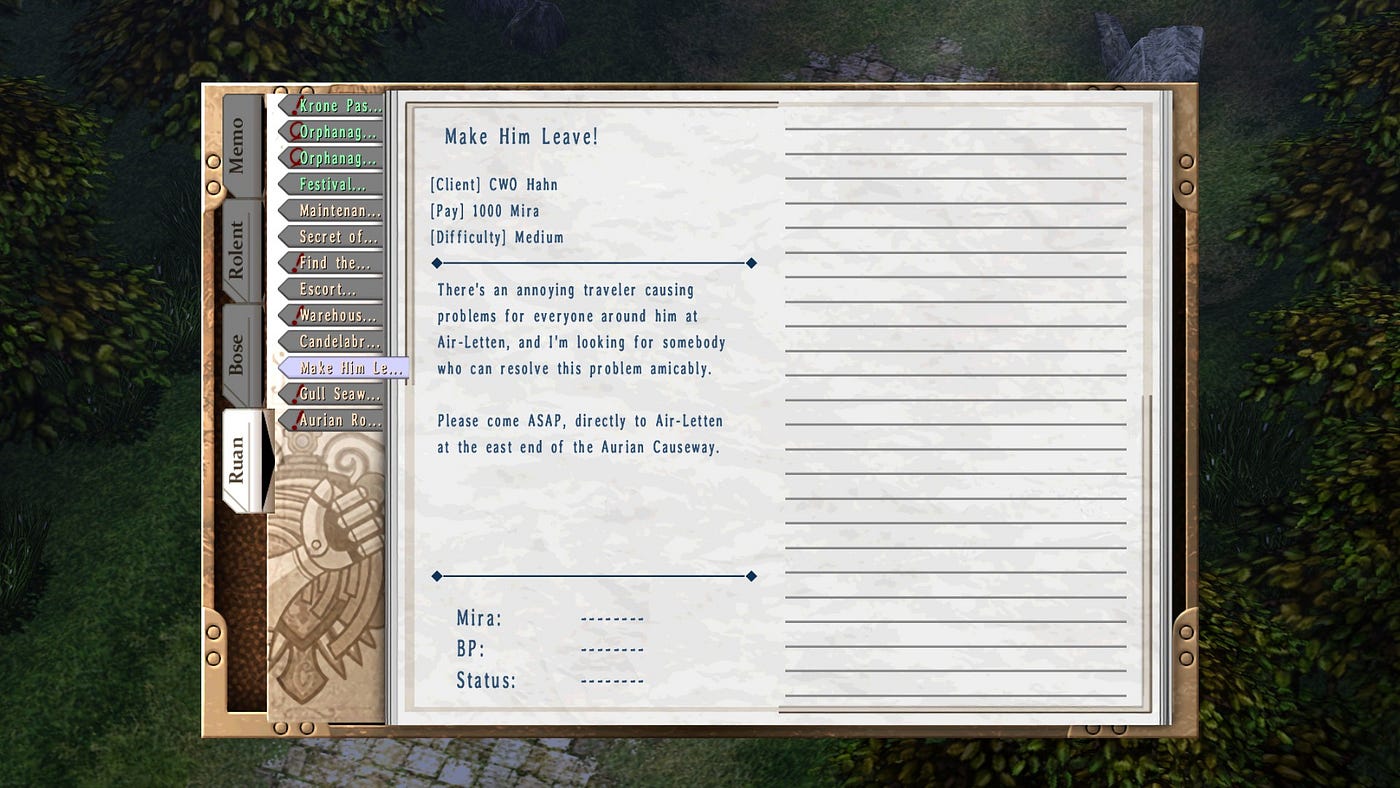
Japan, Sexism, and Gender Equality
Times have inverse a chip since 2004, so there's a few places in the game that made me wince slightly. Possibly they were a bit outdated fifty-fifty dorsum when this game was showtime released. These were few and far between, and generally written from the perspective of a "bad" character, so we're supposed to object to these anyway.
In particular, the "immature girl" trope was a flake troubling for me, with various characters along the manner expressing quite graphically the things they might like to do to Estelle, who is quite clearly portrayed as sixteen in this game.
On the flipside, due to the mode Estelle is written, she generally doesn't take shit from anyone. Where I felt almost uncomfortable was due to the frequent lack of player agency in this game, there's sometimes no way to avoid the creepiness, or overcome it by having Estelle beat out the crap out of people.
I know this can exist a trigger for some people so information technology's worth mentioning that this does come up up a lot in the game and sometimes it doesn't get resolved in a fashion I'd discover adequate, although in that location's no portrayal or suggestion of physical sexual corruption present.
Additionally, gender roles are definitely non stereotypical in this game, with various characters in positions of say-so or responsibility shown to be competent and female person, such equally boondocks mayors or military commanders. The player isn't forced into any specific grapheme setups either, and is gratis to make certain characters powerful in boxing, and others powerful at healing, contained of gender.
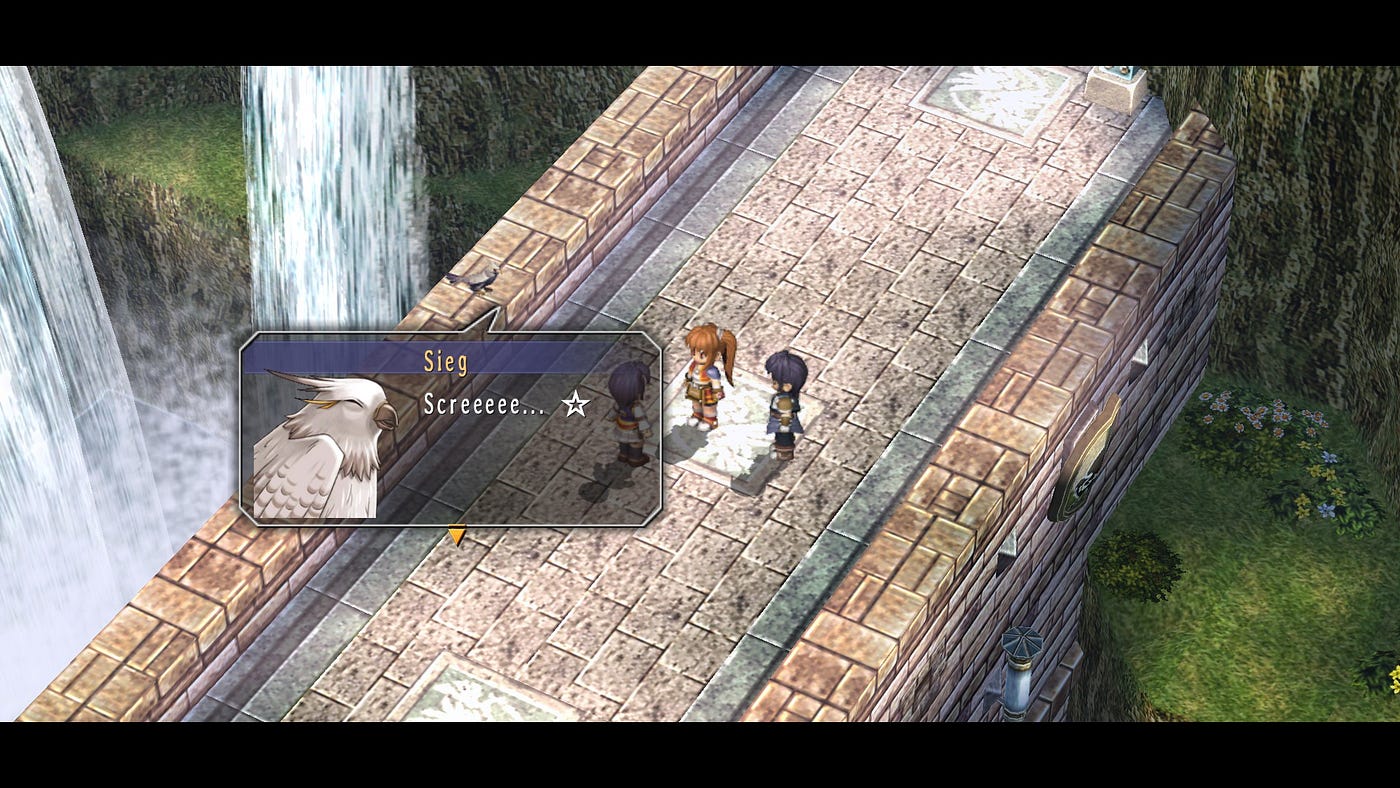
The Beginning of Something Special
The average time for a regular playthrough of this game is around 40 hours. That'southward a big investment. I tend to read non-voiced dialogue pretty apace then I spent closer to 30 hours with the game, yet a significant chunk of fourth dimension, and it took me several months of existent time.
When being commencement introduced to the Trails serial, and its nine mainline games and counting, I call back some people tin exist overwhelmed. Unlike the Final Fantasy franchise, which are mostly entirely standalone games with a few common elements between them, Trails is a complete serial from offset to end, leaving many players to wonder whether they "won't become it" if they start part way through, and others concerned that the outset entry is and then old that it puts them off even starting.
What I can say is that it's definitely no issue to play Trails in the Sky in 2020 on Windows. Information technology works perfectly well, and the writing and art style concur upwards remarkably well given they're well-nigh 2 decades old.
I think the only important consideration is that yous commencement with the start game in an arc, and so Trails in the Sky FC (first chapter, every bit in, this game), or Trails of Cold Steel (the first ane), rather than worrying virtually starting at the very start.
If you do make up one's mind to first here, with Trails in the Sky, and you don't mind doing a lot of reading, playing a game that doesn't have a huge amount of thespian agency, or fast-paced gameplay, but yous're looking for a rich, detailed earth to explore, with deep characters and a genuinely compelling narrative, you could do a lot worse than spending forty hours with this game.
Source: https://medium.com/brit-gamer/the-legend-of-heroes-trails-in-the-sky-review-e22a4a76214c
0 Response to "Legend of Heroes Trails in the Sky Review"
Post a Comment